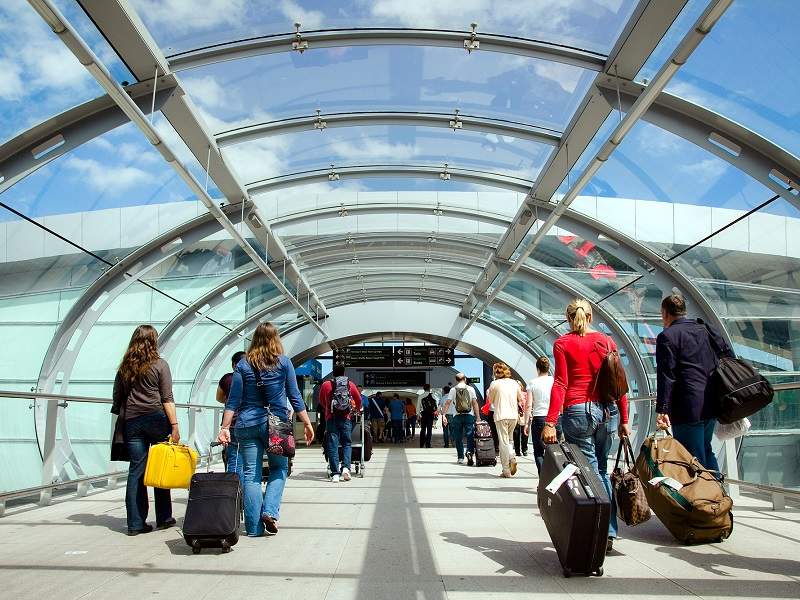
Last year saw a boom in the amount of low-cost, long-haul flights on offer. More people are venturing beyond their home turf, travelling further and more frequently across the globe. But not everyone is fortunate enough to have a direct flight to their chosen destination. The opening up of the world has meant that more than ever before, passengers have to stop off at transfer airports, changing flights in order to complete their journey.
Being seen as a connection hub allows airports access to traffic they might otherwise have never seen. More passengers passing through a terminal means more money for the airport, so it makes sense to invest in infrastructure to address the specific needs of these connecting passengers, making the airport more attractive for both transferring travellers and for airlines to make use of as a suitable connection hub.
Dublin Airport has recently done just that, announcing in August the opening of a new €16m facility created specifically for those transferring from one flight to the next.
Location, location, location
A crucial factor in identifying an airport as a potential transfer hub is where it is situated. If a city has connections to a popular destination, or is ideally positioned along an established flightpath, it makes it more attractive to airlines to stop off for transfers or refuelling – and Dublin is no different, with its well-known links to the Americas.
“Dublin is ideally located on the western periphery of Europe, so the journey between North America and Europe works very well when you connect through Dublin,” explains Dublin Airport managing director Vincent Harrison.
“The city is the only capital in Europe with US pre-clearance facilities. We have the scale required for a hub, with a significant transatlantic network and an extensive short-haul network to Britain and continental Europe. Passengers from Britain for example are flying in the direction they are travelling rather than flying back to go forwards.”
How well do you really know your competitors?
Access the most comprehensive Company Profiles on the market, powered by GlobalData. Save hours of research. Gain competitive edge.

Thank you!
Your download email will arrive shortly
Not ready to buy yet? Download a free sample
We are confident about the unique quality of our Company Profiles. However, we want you to make the most beneficial decision for your business, so we offer a free sample that you can download by submitting the below form
By GlobalDataThe point is an important one. Some airlines, for example, offer flights from UK airports to New York via Amsterdam or Charles de Gaulle, adding costly extra time onto the flight duration.
In fact, airlines themselves play a key role in establishing an airport as a transfer hub.
“Airlines and airports must work together to map out where connectivity works best,” says Harrison. “The best-connected airports have a solid strategy in place to work closely with airlines to seek opportunities to grow this side of the business. This is what we have done with our airline partners. Dublin Airport’s transfer passenger numbers are up 18% this year; we’ll have more than two million transfer passengers in 2018. That’s a business that didn’t really exist at Dublin a few years ago.”
DAA (previously Dublin Airport Authority) has been growing the airport as a gateway between Europe and North America over the last five years. And while not yet on-par with larger transfer hubs such as Heathrow or Amsterdam, Dublin Airport is now connected to 24 UK airports, with timings scheduled to coincide with transatlantic connecting traffic.
“Connecting traffic underpins the viability of some transatlantic routes which may not exist if it were not for the connecting traffic,” says Harrison. “On some routes, connecting traffic accounts for up to 40% of passengers on that flight.”
Addressing the needs of transfer passengers
While it may well be profitable for airports to attract these transfer passengers, the situation isn’t necessarily as easy as processing a few extra flights. To properly process connecting passengers, an airport ideally needs to address their specific needs.
According to Harrison, these are: “value and convenience, and an efficient use of time; good food and beverage options, comfortable seating and waiting areas, information points, clear signage and a seamless journey through the airport.”
This meant that Dublin Airport’s new transfer facilities had to be specifically designed with these requirements in mind.
Dublin Airport’s intrinsic relationship with the US provided DAA an opportunity to make use of passengers’ downtime and provide them with US pre-clearance, meaning all necessary US immigration and customs checks are carried out at Dublin, rather than on landing. Passengers arrive into the US as domestic passengers.
“We wanted to minimise walking distances and connecting routes to make the journey was seamless and easy, and speed up the connection times for our passengers,” says Harrison. “As the majority of our passengers are connecting to and from North American destinations, proximity to our US pre-clearance facilities to enable quick and easy connections to the US was a big factor in the location of our transfer facility. Dublin is the only capital city airport in Europe that offers US pre-clearance.”
With cheaper long-haul flights opening up the world to passengers, airports will increasingly benefit from investment in transfer facilities, attending to the needs of short-stay connecting businesspeople and holidaymakers.



